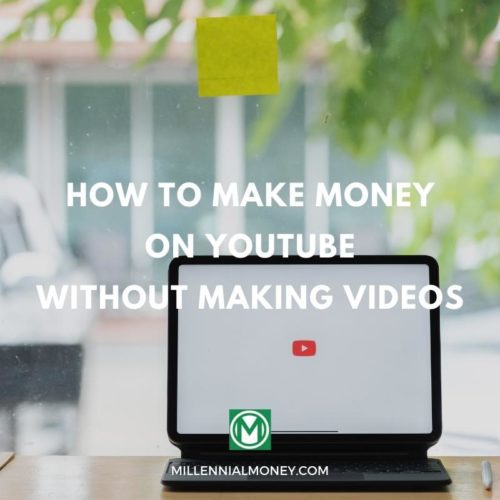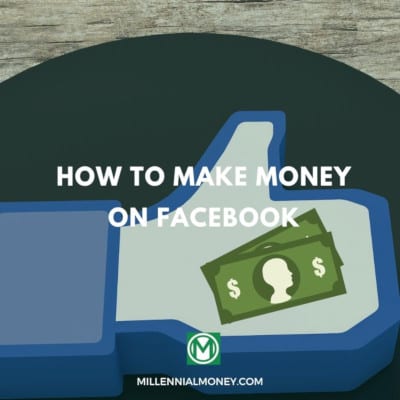Pinterest is the most popular website for discovering ideas. Whether you’re looking for a funny Halloween costume for your pug or a creative way to repaint your grandpa’s old wooden rocking chair, you’ll find inspiration here.
The social media platform is also a pathway to profits for marketers.
Keep reading to learn how to make money on Pinterest.
What Is Pinterest?
Pinterest is a free content-sharing website that has been around since 2010. Head over to the site and you’ll find a range of information across various categories—like beauty, travel, motivational quotes, digital products, food, and DIY home projects.
Pinterest users can browse the site and pin images they find there, online, or ones that they create on their pages. The primary purpose of the average website visitor is to discover inspiration and share cool or thought-provoking media, such as fudgy flourless gluten-free brownies recipes or patio furniture ideas.
Who’s on Pinterest?
In March 2024, Pinterest reported that it had 498 million users. Women make up more than 60 percent of Pinterest’s global audience. However, the site also has a growing presence of male and Gen Z Pinners, which together are up 40 percent year over year (YoY).
On top of this, U.S. Millennial Pinners are up 35 percent YoY, indicating the site is still popular among younger audiences.
Interestingly, a large portion of Pinterest’s base is affluent. In fact, 45 percent of people in the U.S. with a household income over $100,000 are on Pinterest.
Another important thing to keep in mind is that most people go to Pinterest to either start a new project or make a purchase. According to Pinterest, 85 percent of users say they browse the site to start a new project. And 80 percent of weekly Pinners report discovering a new brand or product on the site.
Now that you’re aware of the opportunity Pinterest provides, let’s take a closer look at how to start making money using the platform.
How to Make Money on Pinterest
Making money on Pinterest is a bit more complicated than it is on marketplaces such as Etsy or Amazon Handmade.
That’s because Pinterest isn’t a store. Instead, it’s a third-party content-sharing site. The site lets you link to a store, but you can’t directly sell on the platform like you can with its eCommerce competitors.
This may turn some merchants off, but it can also be a good thing. To attract potential buyers, content has to be authentic and provide a valuable user experience.
With that in mind, here is a step-by-step guide to making money on Pinterest.
1. Create an Account
First things first: Start by creating a free Pinterest account by submitting your name and email address and setting a password. Pinterest offers two types of accounts, including options for personal and business use.
Since we’re talking about making money, select a Pinterest business account. Pinterest personal accounts are not for commercial purposes. However, it’s possible to start with a personal account and convert it to a business account down the line.
Pinterest for business offers wider brand exposure and advanced tools for analytics and reporting. So it’s definitely the way to go if you’re serious about making money.
2. Make a Pinterest Profile
After setting up an account, the next step is to create a profile. Add a photo, your location, and any information that you want to convey to the public.
As a word of advice, remember to match your Pinterest brand with whatever brand you’re promoting. Your Pinterest page will be a direct extension of the organization you’re representing, whether it’s your company or a client’s company.
Pinterest profiles present a unique opportunity for brands to expand their horizons and express personality beyond traditional marketing methods. The content you share sets the tone of your brand.
To illustrate, check out Tilly and Patagonia. Don’t be afraid to get creative and expand beyond the products you are trying to sell.
3. Get to Know Pinterest
If you really want to become successful selling stuff on Pinterest, you must familiarize yourself with how the platform works and become somewhat of an expert on it.
Here are some key terms to be aware of:
- Boards: Just as the name suggests, a board is like a bulletin board. This is where you collect ideas to share with public viewers.
- Group boards: It’s possible to start a board and invite other people to contribute to it using group boards. Pinterest also lets you request to join other public boards.
- Pins: A Pinterest Pin is simply something that you post on Pinterest. When you find something that catches your eye—or that you want to sell—Pin it to a board for others to see. Users can also repin on Pinterest by saving an existing Pin to another Pinterest board.
- Rich pin: A rich pin is a type of pin that shows metadata in the actual pin. It provides a more comprehensive experience and increases engagement.
- Pinners: Pinterest calls users pinners. To become a pinner, you simply need to create an account.
4. Explore Pinterest
The first thing that you’ll see when exploring Pinterest is the home page, which contains recommended Pins based on the interests you select. You’ll also see content from other accounts, boards, and topics that you choose to follow.
To research new Pinterest ideas, navigate away from the website and start browsing the internet for things you like. For example, you might find a picture of a pair of homemade candle holders or a tutorial on how to make holiday cookies.
Look for a social banner on the website where you’re browsing, and select the Pinterest logo to save media to one of your boards.
5. Claim Your Site
Before you dive in, you must understand that running a social media site like Pinterest is a big undertaking that requires regular upkeep — especially if you’re part of an active community or working with a popular brand.
If you’re still on board and have a website, seal the deal by claiming it so you can access analytics for the pins that you publish from your website, as well as pins other users create using your content.
When you claim a website, your profile picture appears next to any pins that originate from your website. In addition, you get a “follow” button for your Pinterest account that lives next to your website URL on your profile.
The site also offers account verification. Verified merchants get a blue checkmark, while creators and verified accounts get red checkmarks. These indicators help build trust with viewers and show your account is legitimate.
6. Create Pins
By this point, you should have a functioning business account and a linked website. Now, it’s time to start making money by creating Pins to share your products.
Here are some of the types of pins you can create:
- Standard: The standard Pins format is images. You can upload multiple images at a time and add pin descriptions. Remember that picture quality counts. The goal should be to share eye-popping visuals that attract people and get them excited about what you’re offering.
- Videos: In addition to photos, it’s a good idea to offer videos because they can potentially go viral. If you want to rack up shares, your videos need to be high-quality.
- Products: In addition to posting standard images, Pinterest also supports actual products. Posting something as a product lets you show real-time pricing and availability. If you have a product to sell (e.g., clothes or accessories), this is how to do it.
- Ideas: Ideas are short video clips that Pinners can tap through. The site supports up to 20 frames, with each one lasting up to 60 seconds.
- Collections: Another way to enhance your posts is to offer collections. This involves bringing together multiple images that complement one another. Collections are a popular approach for holiday themes. For example, you might offer several different items that customers can mix and match to create the perfect Sherlock Holmes Halloween costume.
Learn More:
7. Review Pinterest Analytics
Pinterest offers powerful analytics for tracking the performance of boards, ads, and Pins in real-time. This way, you can see which posts are generating the most engagement.
Pinterest Analytics metrics to track:
- Impressions: Impressions indicate how many times your Pins or ads appear on the screen.
- Engagements: Engagements refer to saves, Pin clicks, carousel card swipes, and outbound clicks for Pins.
- Outbound clicks: Outbound clicks indicate the number of times Pinners perform actions that send them to a destination outside of Pinterest.
- Outbound click rate: Outbound click rate is the total number of clicks to the destination URL linked to the Pin, divided by the total number of times your Pins appeared on the screen.
- Pin clicks: Pin clicks refer to the total number of clicks on your Pin or ad leading to content off of Pinterest.
- Pin click rate: Pin click rate is the total number of clicks on your Pin or ad divided by the total number of times Pins or ads appear on the screen.
- Video views: Video views measure the number of views that last at least two seconds, with 50 percent of the video in view.
- Engagement rate: Engagement rate is the total number of engagements with your Pins divided by the total number of times your Pins were seen. This includes Pin clicks, saves, and outbound clicks.
- Save rate: Save rate is the total number of people who saw or engaged with your Pins.
8. Run Advertisements
Once you clearly understand how your Pins are performing, you can begin promoting them with online ads.
By running paid ads you can expand your business’s reach, generate more traffic to your website, and increase purchases.
Use Pinterest Ads Manager to Drive Profits
Pinterest provides access to the Ads Manager tool for creating and managing Pinterest campaigns and monitoring performance.
One cool feature of Pinterest Ads Manager is the ability to duplicate existing ads. So if a campaign turns out to be successful, it’s easy to replicate and split test it.
Ads Manager also lets you run multiple campaigns simultaneously, and you can organize campaigns into ad groups if they share similar themes.
Pick a Goal
All advertisements require you to set a marketing objective, which is what you want to get out of your campaign. For most of you, the goal should be generating a conversion or product sale.
The goal you choose ultimately impacts bidding, targeting, and ad formats.
9. Participate in Group Boards
Engaging in group boards is another way to engage with different target audiences and drive traffic to your website or store.
An easy way to start is figuring out which boards your competitors and influencers are using. Go to their Pinterest pages and make a note of what boards they are saving.
When you see a board that’s active and in line with what your company offers, go ahead and request to join the group. You may also want to turn existing boards into group boards. To invite others to participate in an existing project, simply tap the “plus” button under the board title and loop in other collaborators.
As the group owner, you’ll have full control over who participates.
10. Use Search Engine Optimization (SEO) to Generate Pinterest Traffic
Want more people to find your page? It is critical to optimize SEO, just like you would for any other website.
Use relevant keywords that resonate with your brand and products to get the most out of Pinterest’s and Google’s algorithms. It’s also necessary to pick an SEO-friendly username since the name goes into your profile URL.
In addition, you will need to create a Pinterest tag, which is a piece of code that you add to your website that lets Pinterest track visitors to your website and monitor their actions.
Further reading: Best SEO Tips for Bloggers
11. Use and Create Templates
As you know by now, Pinterest is all about appearances. So the trick is to make your boards eye-catching and shareable. One way to do this is to use Pinterest templates. For more information, check out Canva’s impressive selection of Pinterest Templates.
You can also create templates on Canva and sell them to other users. This can lead to residual income because you can sell unlimited templates for reuse. Who knows? Create a few popular templates and money could start trickling in monthly.
Rohit Lohia at The Branded Bucks has created an awesome guide to help you create templates on Canva in a few easy steps.
12. Create Pincodes
Pincodes are QR code-like graphics that enable you to share Pinterest content in the real world.
By creating a Pincode, other Pinners can point their camera — or Pinterest Lens — at the code and scan it.
To create a Pincode, simply click your profile picture and select “download Pincode.” Then, share the Pincode with people when you meet them or in advertisements.
13. Try Affiliate Marketing
Yet another way to make money on Pinterest is by selling affiliate products.
To do this, you need to create a Pin from your profile page and add an affiliate marketing link from an ad network like Amazon Associates or CJ. If someone purchases from one of your affiliate links, you can receive either a fixed payout or a percentage of the revenue.
Pro tip: You must disclose in your Pin that you’re posting an affiliate marketing link. Most people do this by simply typing (affiliate) or (affiliate link) at the end of the post. One way around posting this disclaimer is by driving the traffic to a blog page first, where you can then feature the affiliate product.
14. Learn How to Make Products
Keep your eyes open when browsing Pinterest to discover new money-making ideas.
For example, you might learn how to make DIY flower arrangements or picture frames — both of which are marketable and shareable.
Then, with a little practice, you could start a side hustle and sell these items online — using Pinterest to get your products in front of potential buyers.
15. Become a Pinterest Virtual Assistant
Pinterest virtual assistants (VAs) help bloggers, business owners, and websites grow their presence on Pinterest.
If you’re good at Pinterest, you can make money setting up a channel and managing it on behalf of clients – adding promoted Pins, creating hashtags, engaging with other users, and generating page views.
Your VA gig can be full-time or part-time, depending on your availability and commitment.
If this sounds appealing to you, check out sites like FlexJobs, FancyHands, Zirtual, or Belay Solutions to find Pinterest VA gigs. You can also post your services on Fiverr or browse for Pinterest-related gigs on Upwork.
Further reading: How to Become a VA (Make $30/hour)
Frequently Asked Questions
Next, let’s dive into some of the most common questions I’m hearing about running a Pinterest business.
How many followers do you need on Pinterest to make money?
It doesn’t matter how many Pinterest followers you have. It’s possible to make money regardless. What matters is producing high-quality content so that your site ranks higher and people discover your brand.
Focus on creating content that is engaging and highly shareable, and the rest should fall into place. With that said, it helps to have more followers!
Can you make money on Pinterest without a WordPress blog?
Yes. If you aren’t into blogging and don’t have a website, there are still ways to make money on Pinterest.
One strategy is affiliate marketing. Another way is to help businesses and individuals market their services on Pinterest as a virtual assistant or SEO consultant. And if you’re into graphic design, you can create and sell templates or Pin designs.
Does Pinterest allow affiliate sales?
Yes, Pinterest currently allows you to use affiliate marketing links — a popular strategy for selling third-party eCommerce products.
Is Pinterest a good side hustle?
Pinterest can make a great side hustle if you are passionate about it and learn to master the platform. It takes a bit of work, but in time, you can make serious money.
You may even be able to generate passive income by selling templates, Pin designs, and products with affiliate marketing links.
Learn More:
What is Tailwind?
The Tailwind app is a third-party site that makes it easy to schedule posts for Pinterest.
When you link your Pinterest account to Tailwind, the company analyzes your account and lets you know the best times to Pin for maximum engagement.
Simply put, Tailwind is a safe, helpful tool for automating scheduling and increasing engagement.
The Bottom Line
Pinterest is a unique site that brings together all sorts of ideas from around the web in one convenient place.
Whether you have an eCommerce blog, use affiliate marketing, or showcase your handicrafts, you can earn extra money for doing what you love with the right Pinterest marketing tactics. What’s better than that?
Alternatively, if you genuinely believe in the long-term value of Pinterest, you can always pick up some $PINS stock.
At the end of the day, it’s going to take more than one income stream for you to reach true financial independence. At one point, I had 13 of them!
Here’s to finding side hustles and investment opportunities that are both personally fulfilling and profitable. Whether you decide to open up shop on Pinterest or not, I will be rooting for you each step of the way.






No comments yet. Add your own